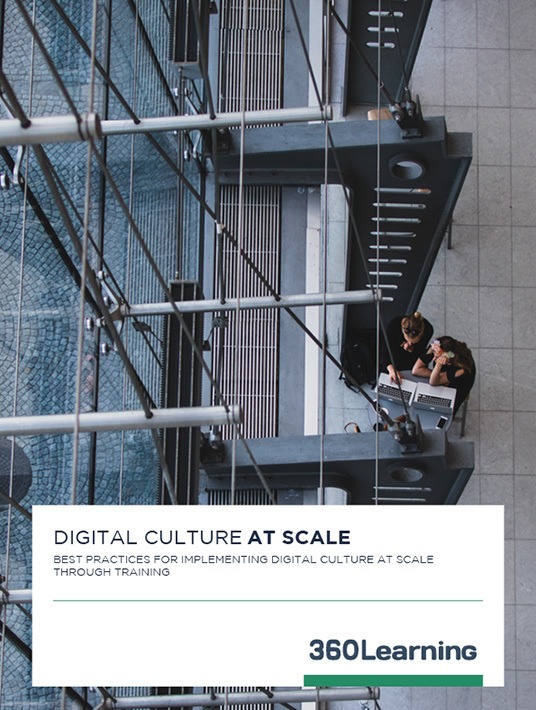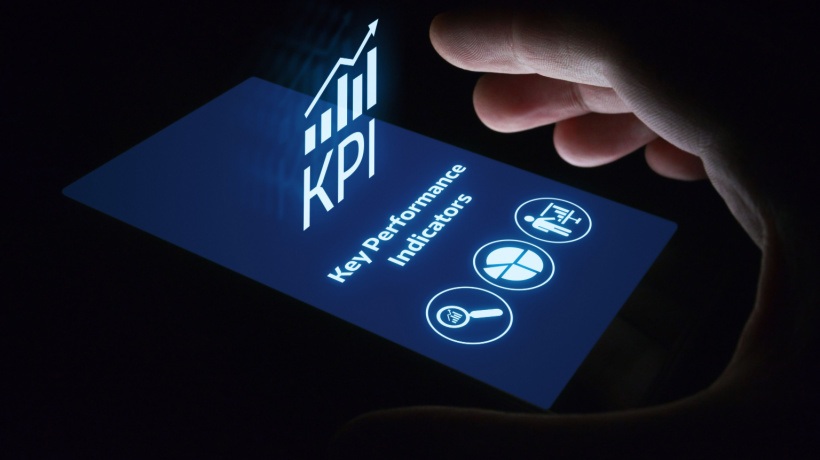Measuring Digital Acculturation In Organizations
No matter the size of the company, when talking about digital culture, you will be faced with different levels of appropriation. This can be explained by several factors, including the age of employees, of course, but also seniority, their past experiences within the company, and obviously their job. A developer is much more likely to have a solid digital culture than a financial analyst!

Various barriers exist in the workforce: digital reflexes that have not yet been mastered, tool complexity (whose ultimate purpose is often forgotten), job-based cultural difference (smartphone usage at work, for example), lack of skills, and fear or resistance to change.
Even within an organization that one imagines by definition to be “digital” since it is a startup, like here at 360Learning, these differences exist and it is perfectly normal. Based on this observation, how can you efficiently measure workforce digital acculturation?
Monitoring Tool Usage, A Good Idea?
Establishing a digital workplace culture requires a pedagogical approach that can take different forms: online training, classes, internal initiatives, conferences, etc. Identifying measurement criteria for each channel is a best practice that allows you to analyze the pertinence of each method and the degree of message retention.
Measuring the usage of each channel, such as email open rates or the engagement rates on a corporate social network, also provides you with a general idea of internal appropriation of these tools. Ultimately, what counts is driving action. Vanity metrics, what we call KPIs that are only used to make something look good, are not pertinent actionable items.
Let’s use an example that we are very familiar with here at 360Learning: eLearning. If you deploy an in-house training platform, you can establish various KPIs ahead of deployment, including training completion rates, session length, average score, etc. With 360Learning, you can even monitor learner interactions or learner-trainer interactions and therefore have a clear idea of what topics excite passion and questions and offer further training on these topics. In this example, training-related KPIs have a real impact on efficiency.
Evaluation Methods And Goals
Measuring tool usage can provide an overall vision of digital acculturation, however, it is nevertheless essential to develop a personalized approach and objectives. As we mentioned earlier, defining goals for each individual staff member is a must. Since culture changes over time, these goals must be able to evolve and adapt based on both strategic corporate priorities and individual employee progress.
One best practice identified during our last conference on the topic concerns the frequency of updating these goals. Transforming annual objectives into short-term, flexible, measurable, and precise objectives makes it possible to establish clear, understandable road maps. This corresponds to the dynamics of digital transformation – agility within a company results from the transition from a static performance management model to a model based on continual improvement and the development of staff members’ skills.
Adopting simple and customizable project management tools, including Trello to give an example, is an easier way to consistently monitor business goals. Adopting an eLearning platform like 360Learning also allows you to monitor digital acculturation progress and to continually adapt and refine objectives.
Onboarding Never Ends
At 360Learning, we have taken this approach even further by structure training programs that combine the mastery of cultural skills (workplace methodologies and practices) and job skills. To fulfill objectives, the mastery of both skill sets is necessary (business or cultural) and different assessment methods are used (self or peer assessment).
The underlying goal is to ensure that new hires quickly assimilate culture and processes and are operational almost immediately. With this in mind, their onboarding objectives are set ahead of time and depend on their program progress.
Thanks to feedback loops present during the onboarding program, their objectives are constantly adjusted and refined based on new hire and onboarder feedback. The onboarding program does not end; it accompanies staff members throughout their career at 360Learning, to help them learn and master a maximum number of skills. Employees are free to branch out by, for example, following a program related to another profession. Success is evaluated by the mastery (or not) of work methods that are constantly measured.
Our KPIs are solely linked to the assessment of processes and habits, which gives us excellent visibility on staff members’ internal culture fit. Our model is still being tested, of course, but we are already thinking about the next steps, including measuring the speed of new skill adoption – the goal being to provide the most efficient personalized skill programs possible.







